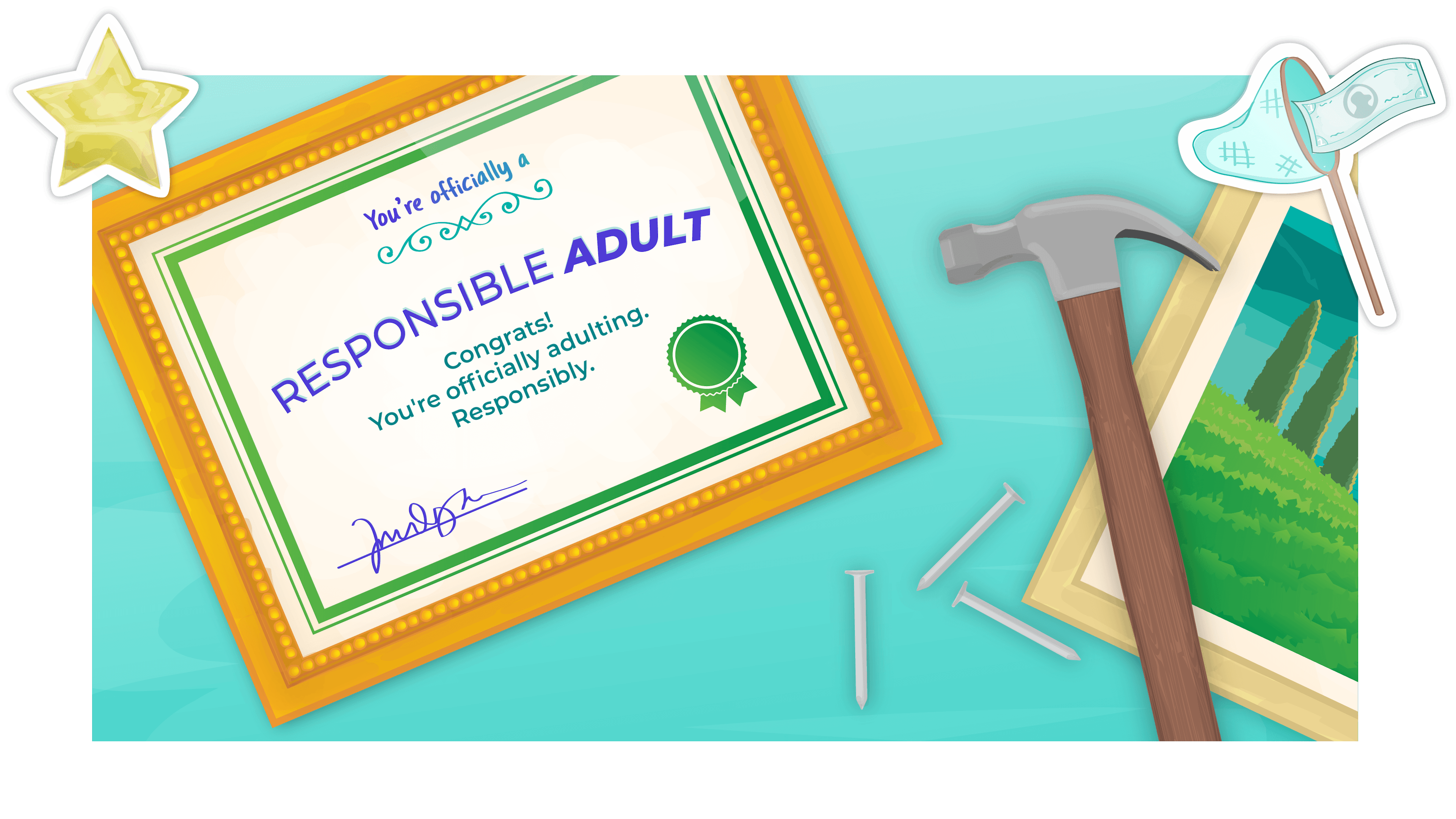The Story
Not to freak you out, but Americans aren't exactly killing it where emergency savings are concerned. Too late, freaking out.
It’s not just you. Forty-one percent of U.S. households can't scrape together enough cash to cover a $2,000 expense, according to PEW. Breathe. Wherever you are on the savings spectrum, building an emergency fund — even from scratch — isn't as huge as you think. We teamed up with Fidelity to help you get it done. Where do I start?
With a definition. An emergency fund is just what the name implies: a stash of money you've set aside to see you through your next financial ‘oh nooo’ moment. It’s designed to come to the rescue — swooping in and cleaning up the mess, headache-free. How big should the net be?
Depends on who you are. Think about the number of people depending on you (your parents, kids, fur babies, significant other), what your space needs (did you recently buy a ‘quaint’ house that might need TLC?), or health emergencies (like an unexpected trip to the ER, or big medical expenses before you hit your deductible). Psst...being self-employed means you might need a bigger emergency fund because you can't necessarily count on a steady paycheck. Ditto if you work in an industry that's vulnerable to layoffs. Okay. But is there a ballpark number?
Experts say to shoot for three to six months' of take-home pay. That may feel like a ton of money when you do the math. But before you panic, keep in mind that no one saves this kind of cash overnight. Baby steps. Here are a few:
Make like a squirrel. Even saving $100 per paycheck adds up to $2,400 over the course of a year. You can also put cash windfalls (aka a portion of your next work bonus or tax refund) toward your emergency fund.
Self-promote. The next time you get a raise, try maintaining your current budget while sending that extra cash to your savings account until your emergency fund is topped off. Your future self will seriously thank you.
Multitask. If you're paying down high-interest debt, it might feel like you don’t have anything left for your emergency fund. Good news: Fidelity recommends starting with a bite-sized emergency fund of $1,000, then focusing on the debt while continuing to put away a little each month in your savings. Once you're debt-free, make it all systems go on the emergency fund.
Got it. Where should I park it?
Under the mattress isn't the best choice. And you don't want it tied up in a fund you can't easily access, like in your 401(k) or a CD, either. The whole point is to have it accessible so you can use it when you need it. On the flip side, having it connected to your checking account is risky. Hiii, temptation. A high-yield savings account that's separate from your checking is your best bet. This way, you'll earn some interest while your emergency fund hangs tight. Fidelity can help make sure you’re putting your money somewhere it can have babies. Get started here to find the right option for your cash. theSkimm
Taking the time to build an emergency fund now pays off big later. And achieving this goal means you can move onto the next one in your journey to greener (financial) pastures.
Subscribe to Skimm Money
Your source for the biggest financial headlines and trends, and how they affect your wallet.






